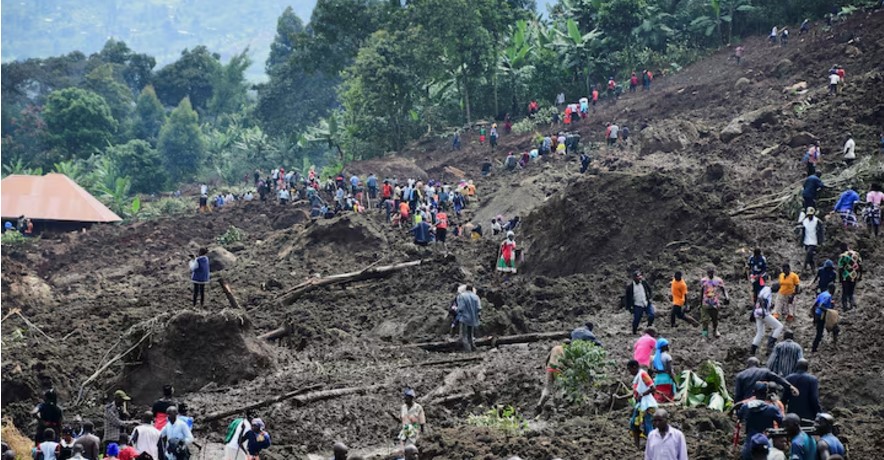Death toll in Uganda landslide rises to 17, dozens of homes buried

By Reuters |
The area where the landslide occurred is mountainous and has experienced similar disasters in the past, including an avalanche in 2010 that killed at least 80 people.
The death toll from a landslide triggered by heavy rain in eastern Uganda has climbed to 17, a government spokesperson said on Friday, with more than 100 others missing.
The landslide occurred on Wednesday in Bulambuli district, about 300 km east of the capital Kampala, and buried dozens of homes across several villages.
Keep reading
Footage on local television showed vast areas covered in deep mud where homes and schools once stood.
Survivors wailed for missing loved ones as rescue workers dug through the sludge in search of survivors.
Charles Odongtho, spokesman for the office of the Prime Minister, which oversees disaster response work, said the government had warned people living in risk-prone areas about possible landslides at the onset of seasonal rains.
He told Reuters he was shocked by the death toll considering the early warning system in place.
 Volunteers remove boulders on November 29, 2024 as they search for the trapped bodies at the scene of a landslide in Uganda’s Bulambuli district. (Photo: REUTERS/Abubaker Lubowa)
Volunteers remove boulders on November 29, 2024 as they search for the trapped bodies at the scene of a landslide in Uganda’s Bulambuli district. (Photo: REUTERS/Abubaker Lubowa)
At least 45 households were completely buried, the Uganda Red Cross Society said in a statement, while others were partially damaged.
Ignatius Wamakuyu Mudimi, a lawmaker in Elgon County, said his niece who had recently given birth was among the victims.
"She was buried with the baby," he said in footage shown on Uganda's NTV broadcaster.
The Ugandan government has directed citizens living in landslide-prone areas to relocate.
The Red Cross and police are conducting a search-and-rescue operation.
Uganda has been hit by unusually heavy rainfall since October that has triggered widespread flooding and landslides in some areas.
On Tuesday, torrential rain caused the River Nile, the main branch of which runs through Uganda, to burst its banks and flood a highway connecting Kampala to the northwest, according to the Uganda National Roads Authority and police.
Large swathes on the slopes of Ugandan mountains have been denuded of their forests and other vegetation for arable land, increasing the risk of landslides.
The area where the landslide occurred is mountainous and has experienced similar disasters in the past, including an avalanche in 2010 that killed at least 80 people.
Reader comments
Follow Us and Stay Connected!
We'd love for you to join our community and stay updated with our latest stories and updates. Follow us on our social media channels and be part of the conversation!
Let's stay connected and keep the dialogue going!
















